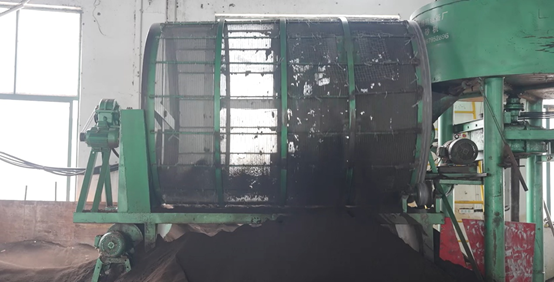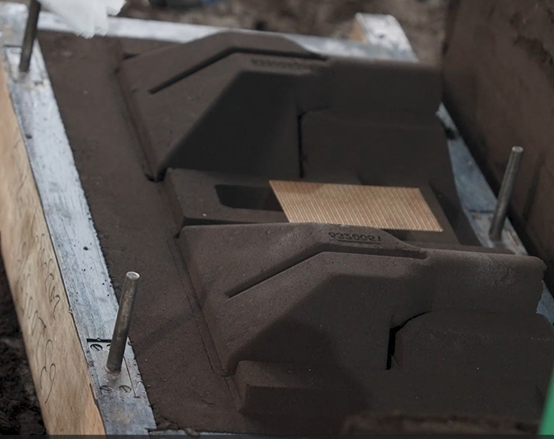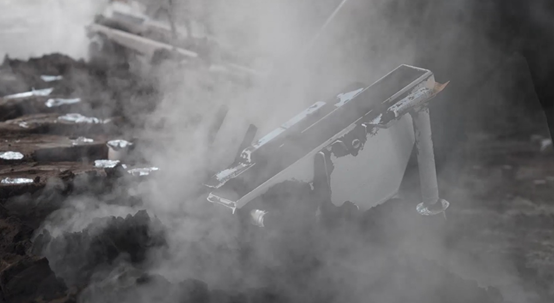Walking into the workshop, you can see a remarkable scene: on one side, there are master craftsmen grasping sand shovels and busy around the sand box — these are the “old symbols” of sand casting that have continued for thousands of years; on the other side, the intelligent sand mixer is running at a steady speed, screening out uniformly sized molding sand — this is the “new equipment” that modern industry
has provided to the old craft.
The “foundation” of traditional craftsmanship: Sand casting relies on “flexibility” for its foothold. The principle of sand casting is actually not complicated: use sand to create a mold for the casting, pour molten metal into the cavity of the mold, and once the metal cools and solidifies, breaking the sand mold will allow you to extract the casting.
Its greatest strength is ‘flexibility.’ In the early years, the workshop relied entirely on manual sand molding and scraping molds. Although it was tiring, for small orders and urgent requests, sand casting was undoubtedly reliable. ‘There was no need to make metal molds in advance; if a client wanted a gear casing with grooves, the masters would manually shape the sand molds, and samples could be produced in just a few days. In fields such as new energy and automotive machinery, its advantages become even more apparent. For small batch castings with dozens of pieces, sand casting saves over 60% of costs compared to die casting—this is also the main reason why our aluminum alloy foundry initially focused on sand casting.
Where did it once get stuck? Precision, efficiency, and environmental protection have all faced challenges. But modern industry has arrived, revealing the ‘shortcomings’ of traditional craftsmanship. In terms of precision, the past industrial requirement for casting dimensional deviation was ‘±2 millimeters’, but now many customers are stuck at ‘within ±1 millimeter’. Efficiency is also lagging behind. Making complex sand molds with irregular grooves, such as engine oil pans and valves, used to take 7 days from ‘drawing’ to ‘mold repair’, while the production cycle given by customers is often only 10 days, with ‘mold making occupying most of the time’. As a result, most customers who used to customize molds with sand casting have now started using gravity casting, high-pressure or low-pressure die casting. More importantly, there’s environmental concern. The coal tar binding agent used in traditional sand mixing has a pungent smell, and waste sand is directly piled in the factory area, with a treatment cost of over 200 yuan per ton. What is the breakthrough? Standardization, greening, and precise positioning. The turning point lies in the efforts to ‘fill the gaps’. First, improve precision and speed up efficiency through ‘standardization’. Now the factory no longer relies solely on the ‘feel’ of skilled workers for mold making: precision tools are introduced to assist, with clear parameter standards set for every step from sample creation to sand mold forming. The production time for complex sand molds has been reduced from 7 days to around 3 days, and dimensional precision can be consistently maintained within ±1 millimeter.
Relying on “greening” to pass environmental protection standards. The materials have been changed: water-based environmentally friendly adhesives have replaced coal tar, reducing harmful substances in workshop exhaust by 80%, and workers no longer need to wear thick masks while working. Waste sand is no longer “piled up waiting for treatment”—with the introduction of crushing, screening, and dust removal equipment, 85% of the old sand can be reused for mixing sand. More importantly, the “positioning” has been accurately identified. Sand casting has not tried to compete with die casting’s strengths in “large-volume precision parts” (such as automotive parts in batches of over 10,000), but instead focuses on the demand for “small to medium batches of complex structures.”
In today’s automotive machinery, new energy supporting sectors, sand casting is once again becoming active in the role of “adapting to small and medium batch complex parts.” This old craft can keep up with modern industry, fundamentally it is not about “discarding the old to embrace the new,” but rather preserving the roots of “low cost and high flexibility,” while also addressing shortcomings. Now, the factory provides the best solutions for aluminum products required by customers based on quantity and structural complexity, maximizing the advantages of each process and delivering the best quality to customers.The vitality of old crafts lies not in “unchanged,” but in “changing with demand.”Yongkang Zhonghuan has a production capacity of 5,000 tons of aluminum alloy parts, with over 300 production and testing equipment. From customized molds to casting and processing, we provide one-on-one custom services. We offer the highest quality aluminum casting products and services to customers around the world, serving industries including automotive, engineering machinery, shipping and marine, new energy, and compressors.
Post time: Sep-18-2025



